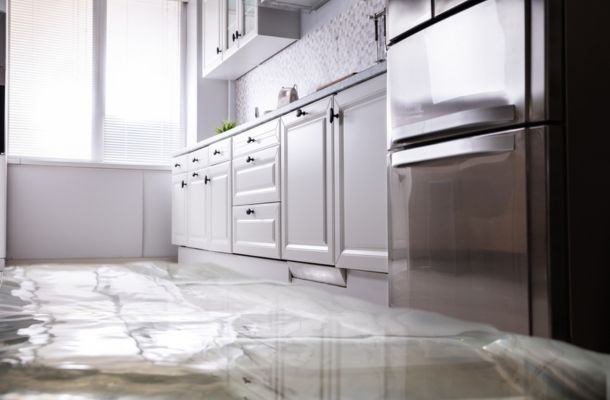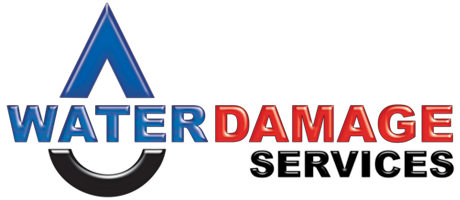Water damage can be a stressful and overwhelming situation for any homeowner. Whether caused by a burst pipe, a leaking roof, or flooding, water damage can lead to significant structural problems, mold growth, and property loss if not addressed promptly. Acting quickly and taking the right steps immediately can help minimize the damage and reduce the overall cost of repairs. This guide provides expert advice on what to do immediately after discovering water damage in your home.

1. Ensure Safety First
Turn Off Electricity
Water and electricity are a dangerous combination. If it is safe to do so, turn off the electricity at the circuit breaker to prevent the risk of electrical shock. Avoid standing in water while accessing the breaker box, and if the water level is high, call an electrician for assistance.
Shut Off the Water Source
Identify and turn off the water source to prevent further flooding. This might involve turning off the main water supply to your home if the source of the water damage is a burst pipe or a malfunctioning appliance.
- Tip: Know where your main water shut-off valve is located in advance so you can act quickly in an emergency.
Protect Yourself and Your Family
Wear protective gear, such as rubber gloves and boots, when dealing with water damage, especially if the water is contaminated with sewage or chemicals. If the water is from a clean source, such as a burst pipe, personal protection is still recommended.
2. Assess the Situation and Document the Damage
Evaluate the Extent of Damage
Quickly assess the extent of the water damage to understand how serious the situation is. Check all affected areas, including floors, walls, ceilings, and personal belongings.
- Look for:
- Standing water
- Wet carpets or flooring
- Sagging ceilings or walls
- Visible mold or mildew
Take Photos and Document Everything
Documenting the damage is crucial for insurance purposes. Take clear photos and videos of all affected areas and items. Make a detailed list of damaged belongings, including descriptions and approximate values.
- Documentation Tips:
- Take wide shots of the entire area and close-ups of specific damage.
- Record the time and date of each photo or video.
3. Contact Your Insurance Company
Report the Damage
Contact your insurance company as soon as possible to report the water damage. Provide them with the documentation you’ve collected and follow their instructions regarding filing a claim.
- Important: Review your insurance policy to understand what types of water damage are covered. Not all policies cover flooding, so it’s essential to clarify this with your insurer.
Work With an Adjuster
An insurance adjuster may need to visit your home to assess the damage. Be available to show them the affected areas and provide any additional information they may need.
- Tip: Keep a copy of all communications with your insurance company, including emails, notes from phone calls, and any paperwork submitted or received.
4. Begin Water Removal and Drying
Remove Standing Water
The quicker you remove standing water, the less damage your home will sustain. Use a wet/dry vacuum, mop, or towels to remove as much water as possible. If the damage is extensive, consider renting a pump or hiring a professional water damage restoration company.
Dry Out Affected Areas
Dry out the affected areas as quickly as possible to prevent mold growth and further damage. Use fans, dehumidifiers, and open windows to increase air circulation and speed up the drying process.
- Important: Do not use electrical appliances in wet areas until it is safe to do so.
Remove Wet Items
Remove any wet furniture, carpets, and belongings from the affected areas to prevent further damage and facilitate drying. Items that are soaked may need to be discarded, especially if they have absorbed contaminated water.
- Separate Salvageable Items: Set aside items that can be dried and restored from those that are too damaged.
5. Prevent Mold Growth
Clean and Disinfect
Clean and disinfect all affected surfaces to prevent mold and bacterial growth. Use a mixture of water and mild detergent or a specialized disinfectant to clean floors, walls, and non-porous items.
Monitor for Mold
Even after thorough drying, monitor the affected areas for signs of mold, such as musty odors, discoloration, or visible growth. Mold can develop within 24 to 48 hours, so ongoing vigilance is necessary.
- Tip: Consider using a moisture meter to check the levels of moisture in walls and floors.
6. Inspect for Structural Damage
Check for Structural Integrity
Water can weaken structural elements of your home, such as floors, walls, and ceilings. Check for signs of structural damage, including warping, sagging, or cracks. If you suspect serious damage, consult a structural engineer or professional contractor.
Inspect Electrical and HVAC Systems
Have a qualified professional inspect your electrical system, HVAC units, and other appliances for water damage. Water can cause serious issues in these systems, including potential fire hazards.
- Important: Do not turn on any appliances or systems that have been exposed to water until they have been inspected and cleared by a professional.
7. Consider Professional Water Damage Restoration
Hiring Professionals
For significant water damage, it’s often best to hire a professional water damage restoration company. Professionals have the tools, expertise, and experience to effectively remove water, dry out your home, and repair the damage.
- Services Provided:
- Water extraction
- Drying and dehumidification
- Mold remediation
- Structural repairs
Choosing the Right Restoration Company
When selecting a restoration company, look for one that is licensed, insured, and certified by industry organizations such as the Institute of Inspection, Cleaning and Restoration Certification (IICRC).
- Ask About:
- Response time
- Experience with similar types of water damage
- Cost estimates and insurance coordination

8. Prevent Future Water Damage
Routine Maintenance
Regular maintenance can help prevent future water damage. Inspect your home periodically for signs of leaks, cracks, or other issues that could lead to water problems.
- Gutters and Downspouts: Keep them clean and ensure they direct water away from your foundation.
- Sump Pump: Test regularly and consider a battery backup.
- Waterproofing: Invest in waterproofing your basement or crawl space to reduce the risk of flooding.
Install Preventative Measures
Consider installing preventative measures such as:
- Water Alarms: Sensors that alert you to the presence of water in high-risk areas.
- Backflow Valves: Prevent sewer backups by installing backflow valves on your sewer lines.
- Flood Barriers: For homes in flood-prone areas, consider installing flood barriers or retaining walls.
Conclusion
Dealing with water damage can be daunting, but taking immediate action is crucial to minimizing the impact on your home. By prioritizing safety, documenting the damage, contacting your insurance company, and beginning water removal and drying as soon as possible, you can reduce the extent of the damage and start the restoration process promptly. Remember to keep an eye on the affected areas for mold and consider professional help if the damage is extensive. Implementing preventative measures will help protect your home from future water damage, providing peace of mind and safeguarding your property.


